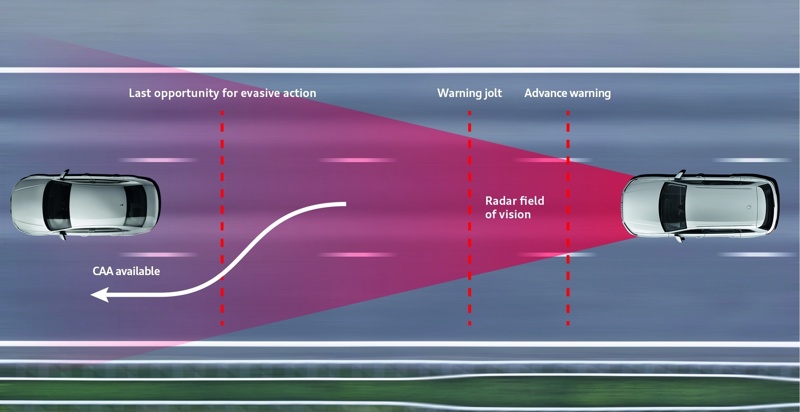- ADAS
- ACC
- ABS
- ALC
- AEB
- AES
- APA
- BSM
- CAS
- DDD
- DMS
- Efficiency Assist
- ESC
- Exit Warning
- FCW
- FCTA
- LCA
- LDW
- LKA
- RCTA
- TSR
Automatic Emergency Steering
Automatic Emergency Steering (AES) is an advanced driver assistance system designed to help drivers avoid collisions by automatically steering the vehicle in emergency situations.
Automatic Emergency Steering (AES) systems utilize sensors such as cameras, radar, and lidar to monitor the road ahead and detect if the vehicle is approaching an object or pedestrian too closely.
Illustration Automatic Emergency Steering Audi
When the AES system determines that a collision is imminent, it can take control of the steering to maneuver the vehicle away from the object or pedestrian. The system may also apply the brakes or adjust the vehicle's speed to further avoid or mitigate the collision's impact.
AES systems employ various algorithms to assess the likelihood and severity of a collision, considering factors such as vehicle speed, distance to the object or pedestrian, and the rate of closure. The system may also use information about road layout, traffic flow, and weather conditions to enhance its steering and braking decisions.
Overall, AES systems provide an additional layer of safety to help drivers avoid collisions. However, it is crucial to remember that AES systems are not a substitute for safe and attentive driving practices. Drivers should always maintain a safe following distance and be prepared to brake or steer away from obstacles if necessary. Additionally, AES systems may not be available on all vehicles or may require specific conditions to function correctly.

